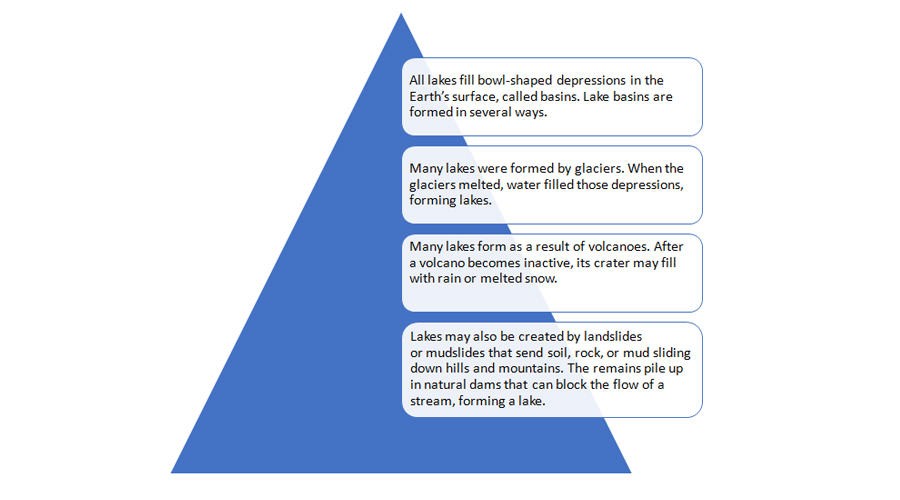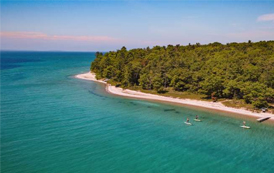World Lakes


World Volcanos
January 16, 2020

World Rivers
January 17, 2020Lakes are freshwater bodies that are enclosed by land on all sides.
The primary difference between a lake and a river is that rivers are connected to another body of water—whether it be an ocean, a sea, a lake, or another river.
Lakes, however, have no place to go.There are countless lakes around the world.
Classification of lakes:
Lakes can be classified based on various criterion.
| Criterion | Classification |
|---|---|
| Basic Classification of Lakes |
1. Temporary lakes 2. Permanent lakes 3. Fresh water lakes 4. Saline lakes |
| Lakes Formed by Earth Movement |
1. Tectonic lakes 2. Rift valley lakes |
| Lakes Formed by Volcanic Activity | 1. Crater and caldera lakes |
| Lakes Formed by Glaciation |
1. Cirque lakes or tarns 2. Rock-hollow lakes 3. Lakes due to morainic damming of valleys |
How lakes are formed:


The Ten Largest Lakes of the World:
| Name, Location | Description |
|---|---|
  |
Area (sq. mi): 152,239 Length (mi): 745 Depth (ft): 3,104 |
  |
Area (sq. mi): 31,820 Length (mi): 383 Depth (ft): 1,333 |
  |
Area (sq. mi): 26,828 Length (mi): 200 Depth (ft): 270 |
  |
Area (sq. mi): 23,010 Length (mi): 247 Depth (ft): 750 |
  |
Area (sq. mi): 22,400 Length (mi): 321 Depth (ft): 923 |
  |
Area (sq. mi): 13,000 Length (mi): 266 Depth (ft): 223 |
  |
Area (sq. mi): 12,700 Length (mi): 420 Depth (ft): 4,708 |
  |
Area (sq. mi): 12,162 Length (mi): 395 Depth (ft): 5,712 |
  |
Area (sq. mi): 12,000 Length (mi): 232 Depth (ft): 270 |
  |
Area (sq. mi): 11,600 Length (mi): 360 Depth (ft): 2,316 |
Uses of Lakes:


- Large lakes like the Great Lakes of North America provide a cheap and convenient form of transport for heavy and bulky goods such as coal, iron, machinery, grains and timber.
- Lakes of either natural or ar¬tificial origin are vital sources of domestic water supply to surrounding towns and industrial cities.
- In mountainous districts, lakes or man-made reservoirs are used to furnish a good head of water to generate hydro¬electric power.
- Salt lakes provide valuable rock salts.
- Some of the world’s best frequented holiday and health resorts are located on lakesides for example, Lake Geneva, Lake Lucerne, etc
Interesting Facts:
- The Dead Sea in Israel is the world’s lowest lake at 1,371 feet below sea level.
- The highest lake in the world is Ojos del Salado at 20,965 feet high. It is located in a crater in the Andes Mountains on the border between Chile and Argentina.
- The largest lake in Europe is Lake Ladoga in Russia.
- A subglacial lake is a lake that is permanently covered by ice. The largest of these is Lake Vostok in Antarctica.
- Lakes can form in interesting different ways such as in the craters of volcanoes, by sinkholes in the ground, or even artificially by dams made by man.
- There are over 187,000 lakes in Finland giving the country the nickname The Land of the Thousand Lakes.





